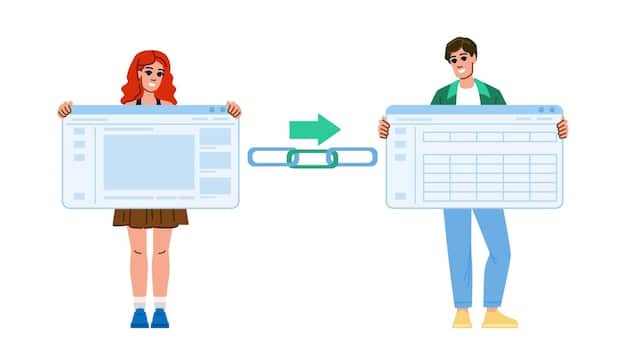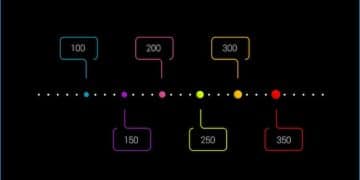Unemployment Benefits: Your Guide to Eligibility, Claims & Payments

Unemployment benefits provide temporary financial assistance to eligible workers who lose their jobs through no fault of their own, offering a safety net while they seek new employment during challenging economic times.
Navigating the world of **unemployment benefits** can feel overwhelming, especially during periods of economic uncertainty. This guide breaks down the essentials, helping you understand your eligibility, how to file a claim, and what to expect regarding payments in the current economic climate.
Understanding Unemployment Benefits
Unemployment benefits are a crucial safety net for workers who have lost their jobs. These benefits offer temporary financial assistance while individuals search for new employment opportunities. Understanding the basics of unemployment benefits is the first step in accessing this important resource.
These benefits are generally funded by employer contributions to state unemployment insurance programs, ensuring that workers have some recourse in times of involuntary job loss. The specifics of eligibility, claim processes, and payment amounts can vary significantly from state to state.
Purpose of Unemployment Benefits
The primary purpose of unemployment benefits is to provide temporary income to individuals who have become unemployed through no fault of their own. This financial support helps to cover basic living expenses while the recipient actively seeks new employment.
Unemployment benefits also serve a broader economic function by helping to stabilize demand during economic downturns. By providing income to unemployed individuals, these benefits help to maintain consumer spending and prevent further economic contraction.
- Financial safety net: Provides temporary income to cover essential expenses.
- Economic stabilization: Helps maintain consumer spending during recessions.
- Job search support: Allows individuals to focus on finding suitable employment.
In addition to providing financial support, unemployment benefits often require recipients to engage in job search activities, such as registering with state employment agencies, attending job training programs, and actively applying for suitable positions. This requirement aims to help recipients return to the workforce as quickly as possible.
To summarize, unemployment benefits are designed to offer immediate financial assistance while encouraging and supporting the return to stable employment. Understanding this foundational purpose is essential when navigating the complexities of the system.

Eligibility Requirements for Unemployment Benefits
Meeting the eligibility requirements is the first hurdle in receiving unemployment benefits. These requirements can vary by state, so it’s crucial to understand the specific criteria for your location. Generally, eligibility hinges on your prior work history, the reason for your job loss, and your availability and willingness to work.
Most states require you to have worked for a certain period and earned a minimum amount of wages during a “base period,” which is usually the first four of the last five completed calendar quarters before you file your claim. The specific earnings requirements can differ widely, so checking your state’s guidelines is essential.
Reasons for Job Loss
The reason for your job loss is a critical factor in determining your eligibility for unemployment benefits. Generally, you must have lost your job through no fault of your own, such as a layoff or a company downsizing. If you were fired for misconduct or quit your job voluntarily, you may not be eligible.
- Layoffs: Generally qualify for unemployment benefits.
- Termination for misconduct: Often disqualifies you from receiving benefits.
- Voluntary resignation: Typically, not eligible unless there is “good cause” related to the job.
Even if you quit your job, you may still be eligible for unemployment benefits if you had “good cause” to leave. Good cause can include situations such as unsafe working conditions, significant changes to your job duties, or a need to relocate due to a spouse’s job transfer. Again, the specifics vary by state, and you’ll need to provide documentation to support your claim.
Availability and Willingness to Work
To remain eligible for unemployment benefits, you must be available and actively seeking work. This typically means that you are ready, willing, and able to accept suitable employment if it is offered to you. You also need to document your job search efforts, such as applying for jobs and attending interviews.
Many states require you to register with the state’s employment agency and use their job search resources. Failing to meet these requirements can result in a loss of benefits.
In summary, eligibility for unemployment benefits depends on your work history, the circumstances of your job loss, and your commitment to seeking new employment. Understanding and meeting these requirements is essential for receiving the financial support you need during a period of unemployment.

Filing an Unemployment Claim: A Step-by-Step Guide
Filing an unemployment claim can seem daunting, but breaking it down into manageable steps can make the process easier. Start by gathering all necessary documents, which typically include your Social Security number, driver’s license, and employment history. Most states allow or even require you to file your claim online.
The online application usually involves creating an account on your state’s unemployment insurance website and completing a detailed questionnaire about your work history and the reason for your job loss. Be truthful and accurate in your responses, as any misrepresentation can result in denial of benefits or even penalties.
Step 1: Gather Required Documentation
Before you begin your application, gather all the documents and information you will need. This can save you time and prevent delays in processing your claim.
- Social Security number: Essential for identification purposes.
- Driver’s license or state ID: Used to verify your identity.
- Employment history: Including dates of employment and employer contact information.
Step 2: Complete the Application
Once you have gathered all the necessary information, you can begin completing the unemployment claim application. Be thorough and accurate in your responses to avoid delays or denials.
The application will typically ask for details about your employment history, including the names and addresses of your former employers, the dates you worked for them, and the reason for your job loss. You may also need to provide information about any severance pay or other benefits you are receiving.
After submitting your application, you will likely receive a confirmation notice and instructions on how to check the status of your claim. Be sure to follow these instructions carefully and respond promptly to any requests for additional information.
The unemployment claim process involves gathering necessary documents, completing an in-depth application and carefully following all instructions from your state’s unemployment agency. Taking these steps will increase the chances of a smooth and successful claim.
Navigating the Waiting Period and Claim Approval
After you file your unemployment claim, there’s typically a waiting period before you start receiving benefits. This is usually a week, but it can vary by state. During this time, your claim is being reviewed and processed.
Your state’s unemployment agency will verify the information you provided with your former employer. Your employer will have an opportunity to respond and provide their perspective on the reason for your job loss. It’s essential that you cooperate fully with any requests for additional information or documentation during this process.
Common Reasons for Claim Delays or Denials
Several factors can cause delays or denials of unemployment claims. One common reason is a dispute over the reason for your job loss.
- Dispute over job loss: Employer contesting the circumstances.
- Insufficient work history: Failing to meet minimum earnings or employment duration.
- Failure to meet eligibility requirements: Not actively seeking employment or being available for work.
If your claim is denied, you have the right to appeal the decision. The appeals process varies by state, but it typically involves submitting a written appeal within a specific timeframe. You may also have the opportunity to attend a hearing where you can present evidence and testimony to support your claim.
Overall, understanding the review process, complying with information requests, and preparing for potential appeals are key to successfully navigating this phase.
Understanding Unemployment Benefit Payments
Once your unemployment claim is approved, understanding how and when you’ll receive payments is essential. Benefit amounts vary by state and are typically calculated as a percentage of your previous earnings, up to a maximum weekly benefit amount.
Most states offer several options for receiving your unemployment benefits, including direct deposit, debit cards, and paper checks. Direct deposit is generally the fastest and most convenient method, as it allows you to receive your payments directly into your bank account. Debit cards are another common option, allowing you to access your benefits through ATMs or point-of-sale transactions.
Extending Unemployment Benefits
In times of high unemployment, federal or state governments may extend the duration of unemployment benefits. These extensions provide additional weeks of benefits to individuals who have exhausted their regular unemployment benefits but are still unable to find work.
The availability and duration of extended benefits can vary depending on economic conditions and legislative decisions. Keep informed about any potential benefit extensions, especially during an economic downturn.
Understanding payment methods, amounts, and potential extensions is crucial for managing your finances. Staying informed and proactive can ensure you receive the full benefits to which you are entitled.
Returning to Work and Impact on Unemployment Benefits
As you search for a new job while receiving unemployment benefits, it’s essential to understand how returning to work—even in a part-time or temporary role—can affect your benefits. Most states allow you to work part-time and still receive partial unemployment benefits, as long as your earnings are below a certain threshold.
When you start working again, you are typically required to report your earnings to the unemployment agency. The agency will then adjust your unemployment benefits based on your income, potentially reducing or suspending your benefits altogether. The specific rules and formulas for calculating these adjustments vary by state, so it’s important to familiarize yourself with your state’s guidelines.
Training and Educational Opportunities
Many states offer training and educational opportunities to help unemployed individuals enhance their skills and increase their chances of finding suitable employment. These programs can range from short-term workshops to longer-term vocational training courses.
- Skill enhancement: Training programs to improve job skills.
- Career counseling: Guidance on job searching and career development.
- Educational courses: Opportunities for further education.
Participating in approved training programs may allow you to continue receiving unemployment benefits even if you are not actively seeking work, as long as you are making satisfactory progress in the program. Be sure to check with your unemployment agency to determine which training programs are approved and how they may affect your eligibility for benefits.
Effectively managing benefits and exploring available resources require a proactive approach and understanding of state-specific regulations. This can aid in a smoother transition back to stable employment.
| Key Point | Brief Description |
|---|---|
| 🔑 Eligibility | Work history, reason for job loss, and availability to work are key factors. |
| 📝 Filing a Claim | Gather documents, complete the application thoroughly, and follow instructions. |
| выплаты Benefit Payments | Amounts vary by state; direct deposit or debit cards are common methods. |
| 💼 Returning to Work | Report earnings; benefits may be reduced or suspended. |
Frequently Asked Questions (FAQ)
▼
The duration of unemployment benefits varies by state but typically lasts for 26 weeks. Extended benefits may be available during periods of high unemployment.
▼
If your claim is denied, you have the right to appeal the decision. Follow your state’s appeals process, which usually involves submitting a written appeal.
▼
Yes, most states allow you to work part-time and still receive partial unemployment benefits, as long as your earnings are below a certain amount.
▼
Unemployment benefits are calculated as a percentage of your previous earnings, up to a maximum weekly benefit amount, which varies by state.
▼
You must be actively seeking work, available to accept suitable employment, and report any earnings to the unemployment agency.
Conclusion
Understanding the intricacies of unemployment benefits, from eligibility requirements to payment processes and returning to work, is crucial for navigating periods of unemployment. By staying informed and proactive, you can leverage this important resource to support yourself while you seek new employment opportunities.





